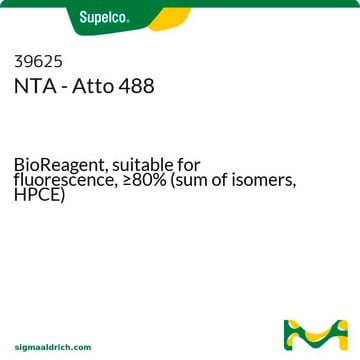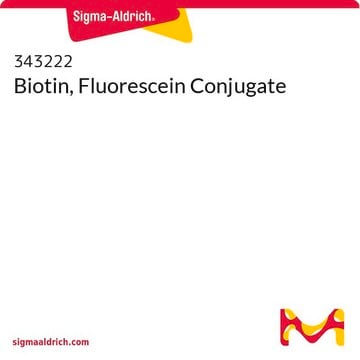43208
Atto 590-Biotin
BioReagent, suitable for fluorescence, ≥90.0% (HPLC)
Sinonimo/i:
Biotin-Atto 590
About This Item
Prodotti consigliati
Nome Commerciale
BioReagent
Saggio
≥90.0% (HPLC)
Produttore/marchio commerciale
ATTO-TEC GmbH
λ
in ethanol (with 0.1% trifluoroacetic acid)
Assorbanza UV
λ: 593-599 nm Amax
Compatibilità
suitable for fluorescence
Temperatura di conservazione
−20°C
Applicazioni
Note legali
Codice della classe di stoccaggio
11 - Combustible Solids
Classe di pericolosità dell'acqua (WGK)
WGK 3
Punto d’infiammabilità (°F)
Not applicable
Punto d’infiammabilità (°C)
Not applicable
Dispositivi di protezione individuale
Eyeshields, Gloves, type N95 (US)
Certificati d'analisi (COA)
Cerca il Certificati d'analisi (COA) digitando il numero di lotto/batch corrispondente. I numeri di lotto o di batch sono stampati sull'etichetta dei prodotti dopo la parola ‘Lotto’ o ‘Batch’.
Possiedi già questo prodotto?
I documenti relativi ai prodotti acquistati recentemente sono disponibili nell’Archivio dei documenti.
I clienti hanno visto anche
Articoli
Atto dyes are a series of fluorescent dyes that meet the critical needs of modern fluorescent technologies.
Il team dei nostri ricercatori vanta grande esperienza in tutte le aree della ricerca quali Life Science, scienza dei materiali, sintesi chimica, cromatografia, discipline analitiche, ecc..
Contatta l'Assistenza Tecnica.








